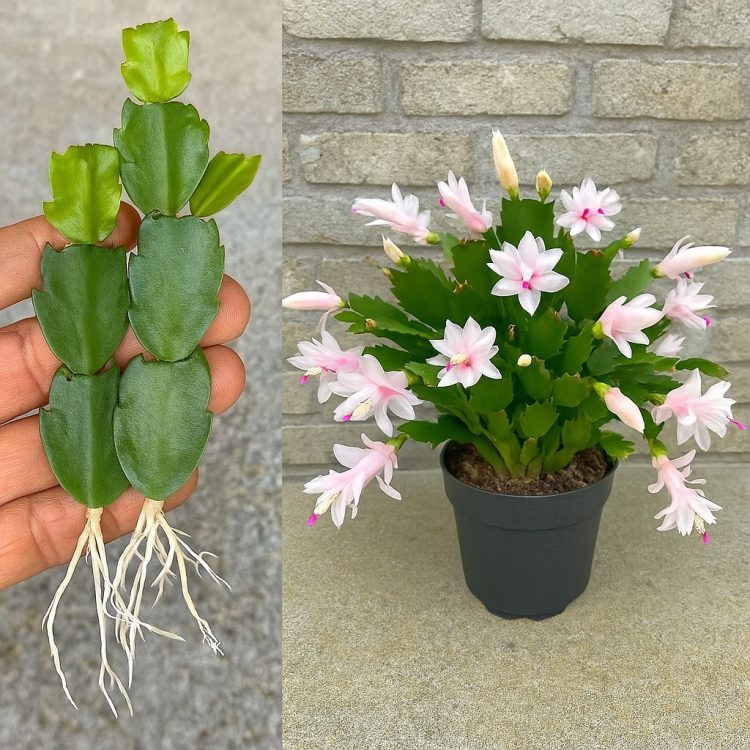You’ll need:
-
1 teaspoon of wood ash or bone meal (for phosphorus)
-
1 teaspoon of brewed black tea leaves or weak chamomile tea (for potassium and trace minerals)
-
1 liter of lukewarm water
Optional: Add a small pinch of Epsom salts (magnesium sulfate) to enhance leaf strength and flower endurance.
How to prepare:
-
Combine the ingredients in a container and mix well.
-
Let the mixture steep for 1–2 hours, then strain out solids.
-
Water your Christmas cactus with about 100–150 ml of this solution once every two weeks during the pre-bloom and bloom period (late October through January).
What to Expect After Application
Within a couple of weeks, small flower buds should begin to appear at the ends of the leaf segments. As you continue care:
-
Buds will swell and eventually open into beautiful pink, red, white, or peach flowers.
-
The plant will maintain healthy green segments, and older stems will firm up.
-
Blooms will stay vibrant longer, sometimes extending into late winter.
Tips for Prolonged and Repeat Blooming
-
Avoid moving the plant once buds form. Shifting light and drafts can cause buds to drop.
-
Maintain moderate temperatures (18–21°C or 64–70°F) once blooming begins.
-
Mist the plant lightly to maintain humidity, especially in heated homes.
-
After blooming, let the plant rest by reducing watering and withholding feedings for 4–6 weeks.
Common Mistakes to Avoid
-
Overwatering: Roots are sensitive to rot. Always use well-draining soil and water when the top inch is dry.
-
Using standard cactus soil: Christmas cacti prefer a rich, moisture-retentive mix with good aeration.
-
Keeping it too warm or too bright before blooming season: It needs cooler, darker conditions to initiate flowering.
-
Feeding with nitrogen-rich fertilizer only: This promotes leaf growth over flowers.
Final Thoughts: Your Christmas Cactus Can Bloom Beautifully
With the right combination of rest, light control, and a touch of natural nutrition, your Christmas cactus can become the centerpiece of your winter indoor garden. This plant has the potential to burst into dozens of bright, tropical-like blooms even in the coldest months.
Give it one spoon of the right feeding, provide a bit of seasonal rhythm, and let nature do the rest. With these methods, even a shy bloomer will surprise you—and might just bloom more spectacularly than ever before.
